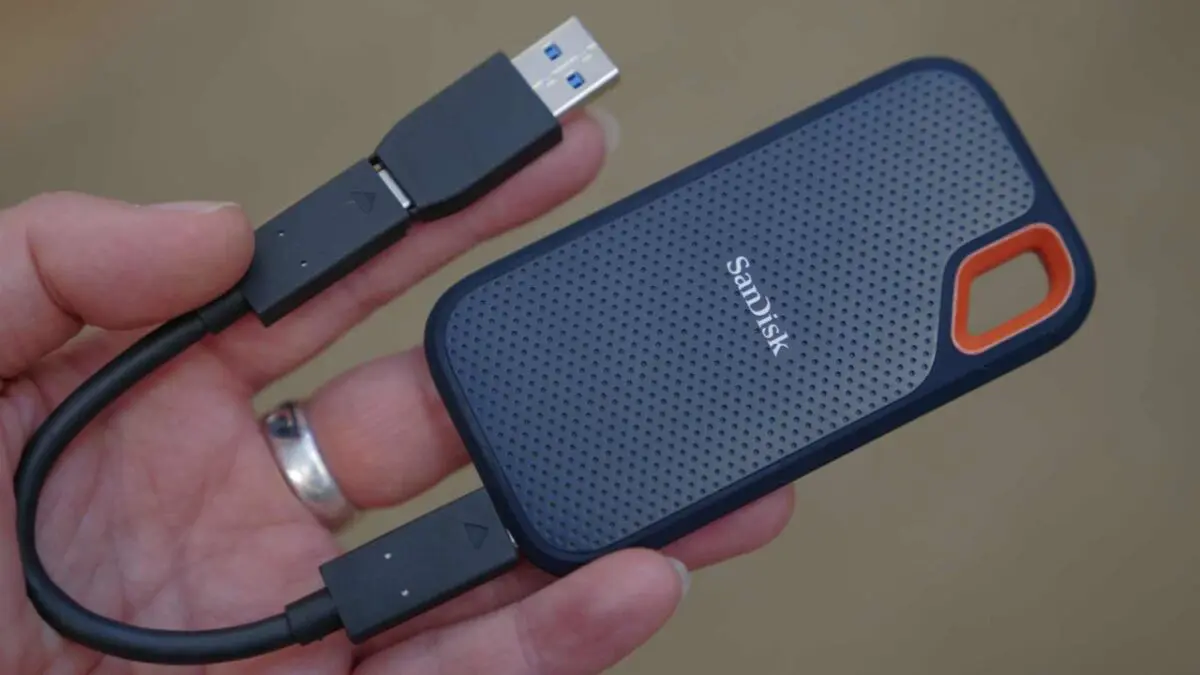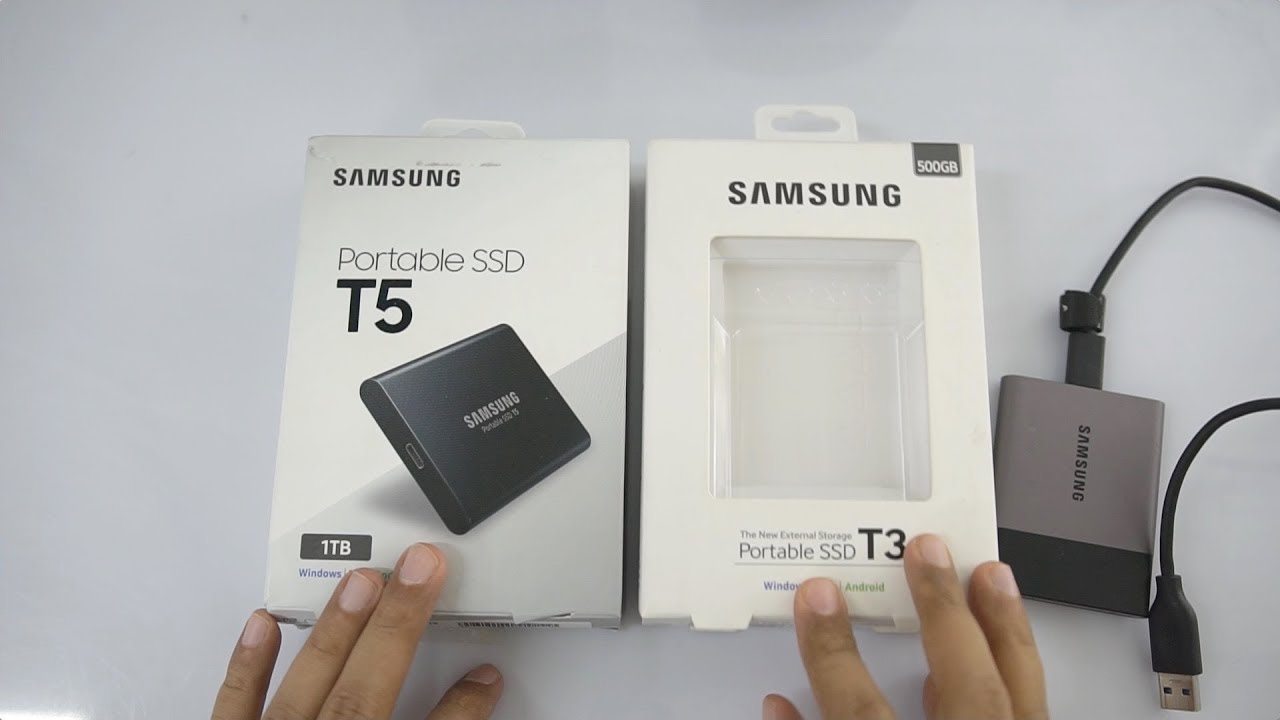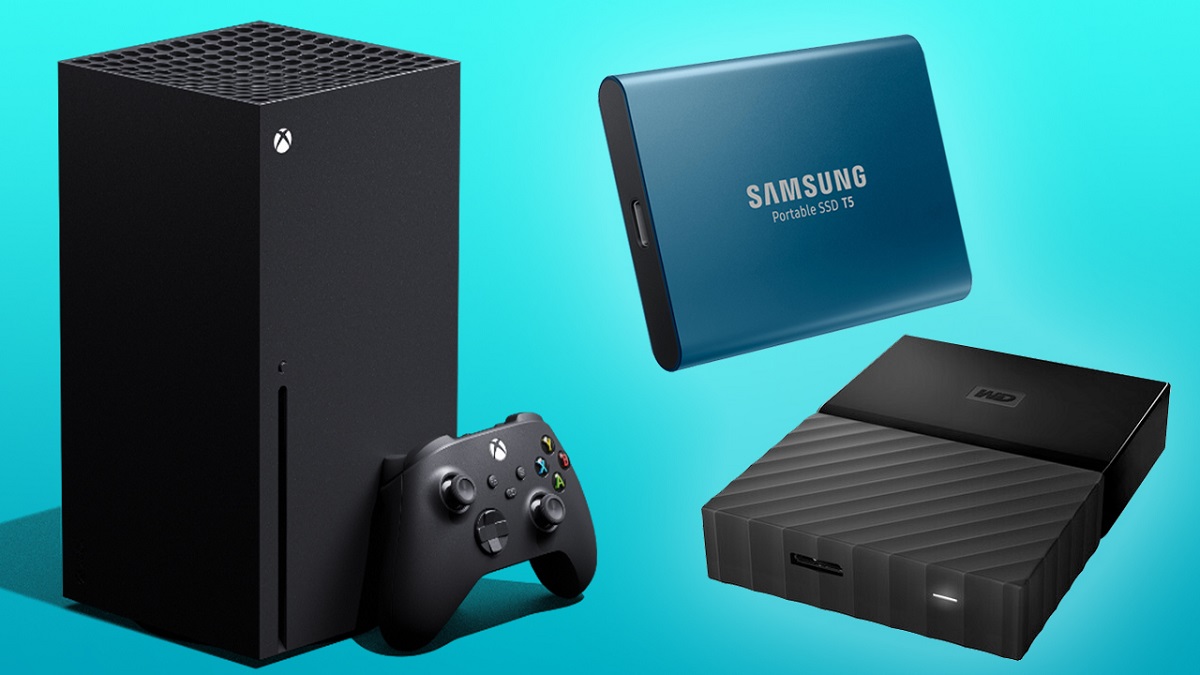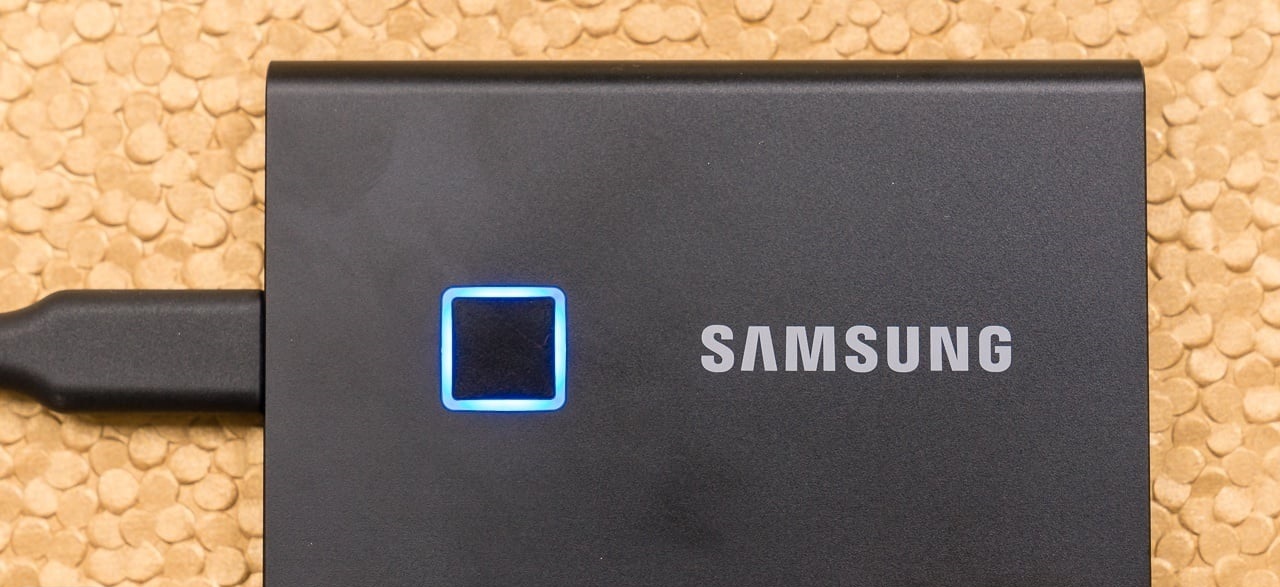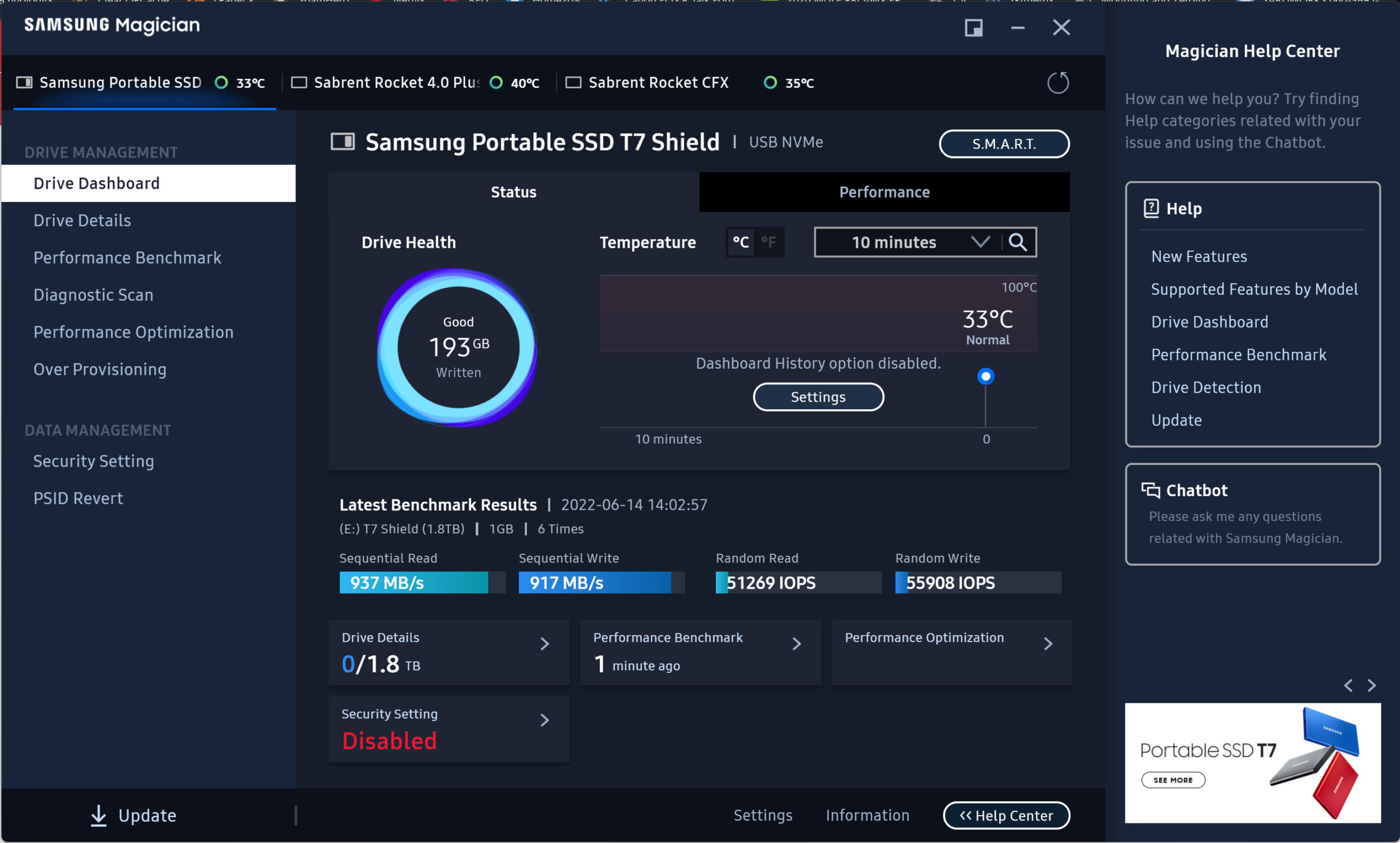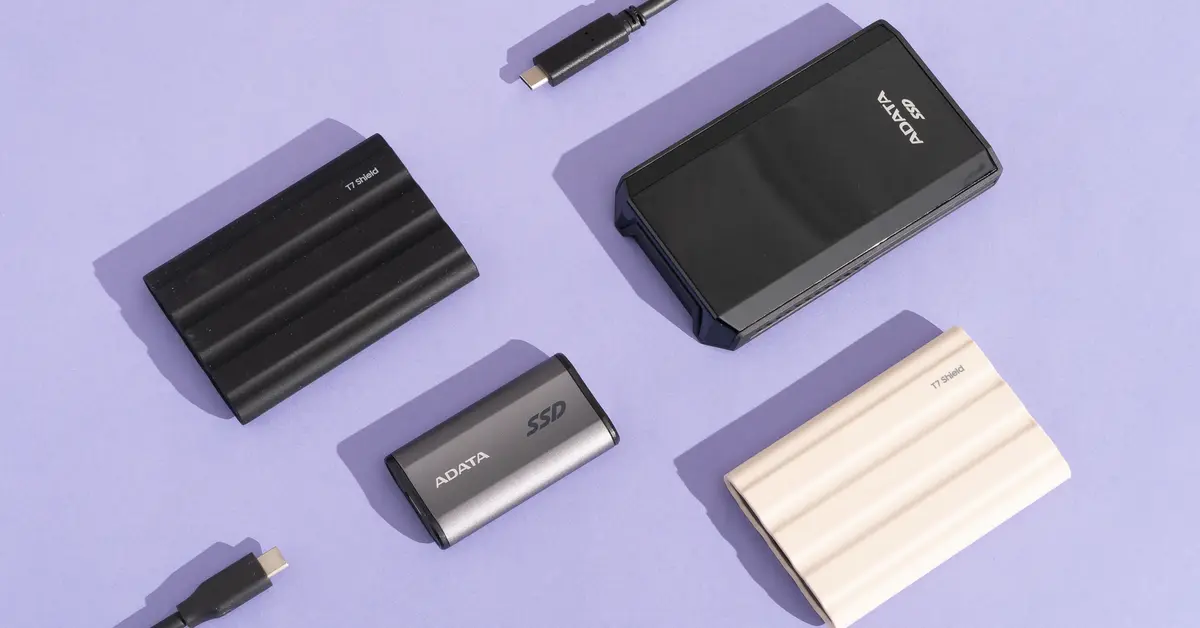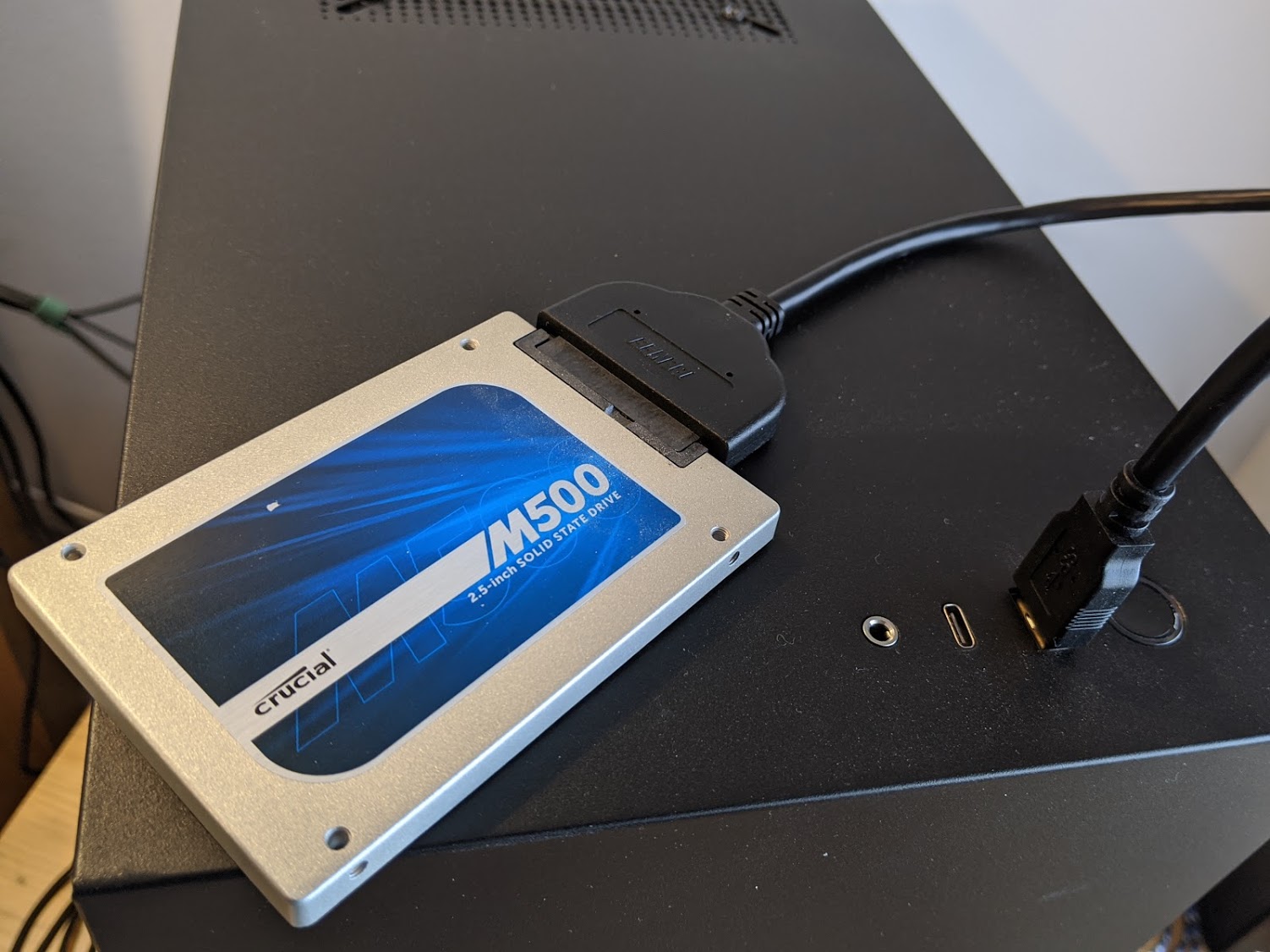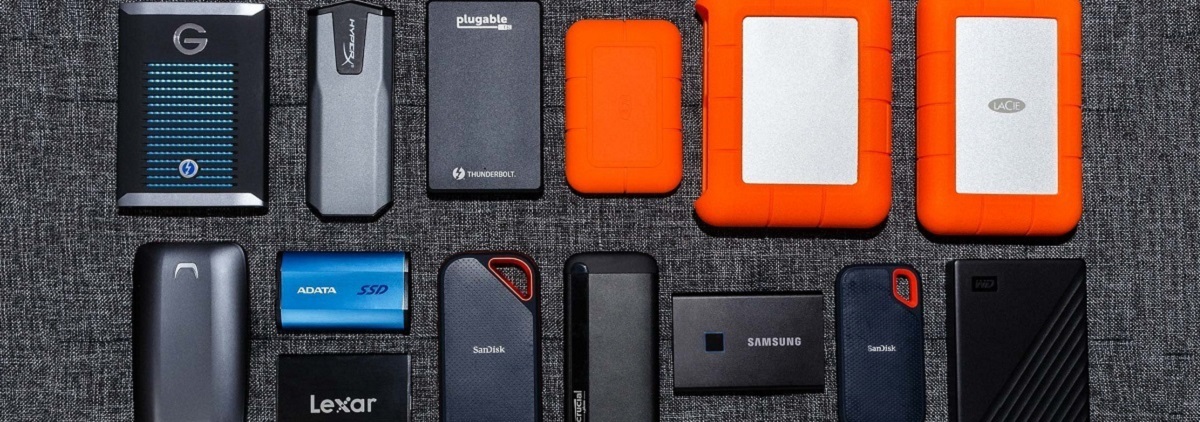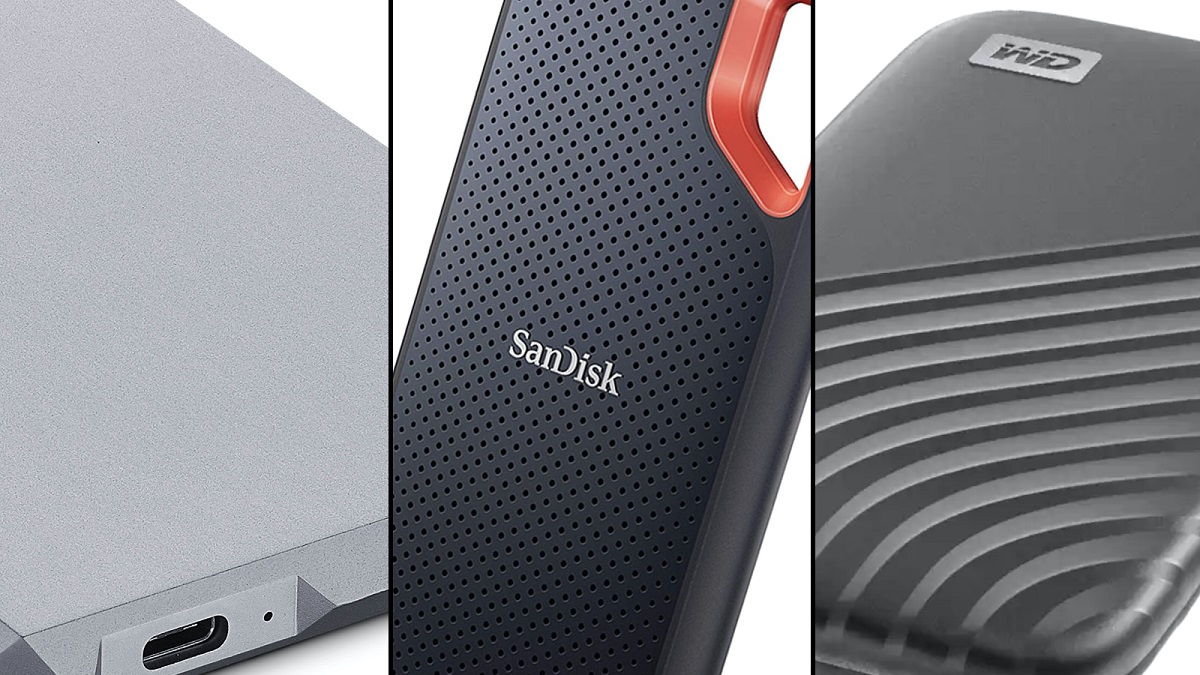Introduction
Welcome to the world of portable SSD drives! In this article, we will explore what a portable SSD drive is, why you should consider using one, how to choose the right one for your needs, and how to make the most out of your portable SSD drive experience.
A portable SSD (Solid State Drive) is a compact and lightweight storage device that uses flash memory to store data. Unlike traditional hard disk drives (HDD), SSDs have no moving parts, making them more durable, faster, and efficient. With their small form factor and high storage capacity, portable SSD drives have become the go-to choice for professionals, casual users, and even gamers who need a reliable and portable storage solution.
So, why should you consider using a portable SSD drive? The answer lies in their numerous advantages over other storage options. Firstly, portable SSD drives offer blazing fast read and write speeds, allowing for quick data transfers and retrieval. This makes them ideal for tasks such as editing and transferring large media files or running resource-intensive applications.
Secondly, SSD technology ensures better data protection. With no moving parts, portable SSD drives are less prone to mechanical failure, making them more reliable and less susceptible to data loss. They are also more resistant to shocks, vibrations, and extreme temperatures, ensuring that your data remains safe and accessible even in challenging environments.
Additionally, portable SSD drives are incredibly convenient and versatile. They are compatible with various operating systems and devices, such as PCs, Macs, laptops, tablets, and even smartphones. With high-speed USB or Thunderbolt connectivity options, you can easily connect your portable SSD drive to different devices and access your data on the go.
Furthermore, portable SSD drives are a fantastic solution for backing up your important data. Whether it’s documents, photos, videos, or music, you can have peace of mind knowing that your data is securely stored on your portable SSD drive. In case of system failures or data loss on your primary device, you can quickly restore your files from the backup stored on the portable SSD drive.
In the next sections, we will delve deeper into the world of portable SSD drives. We will guide you in choosing the right portable SSD drive for your specific requirements, show you how to set it up, transfer data to it, access your data on different devices, perform backups, and provide some tips for maintaining your portable SSD drive. By the end of this article, you’ll be ready to unlock the full potential of your portable SSD drive and enjoy seamless and efficient storage solutions.
What is a Portable SSD Drive?
A portable SSD drive, also known as a solid-state drive, is a compact and portable storage device that utilizes solid-state flash memory technology to store and retrieve data. Unlike traditional hard disk drives (HDD), which rely on spinning disks and read/write heads, portable SSD drives have no moving mechanical parts. Instead, they store data electronically on memory chips, resulting in faster and more reliable performance.
Portable SSD drives are designed to be ultra-portable, with a small form factor that easily fits into your pocket or bag. They come in various storage capacities, ranging from a few gigabytes to several terabytes, allowing you to choose the one that suits your data storage needs.
One of the key advantages of portable SSD drives is their incredible speed. Due to their flash memory technology, portable SSD drives deliver much faster read and write speeds compared to traditional HDDs. This means that data transfers, file access, and application load times are significantly accelerated, resulting in a smoother and more efficient user experience.
In addition to speed, portable SSD drives offer several other benefits. They are more durable and resistant to physical damage since they lack moving parts. This makes them more suitable for use in rugged environments or during travel. Portable SSD drives are also more energy-efficient, consuming less power and producing less heat compared to traditional HDDs.
Furthermore, portable SSD drives are compatible with a variety of devices and operating systems. Whether you’re using a PC, Mac, laptop, tablet, or smartphone, you can easily connect and access your data on a portable SSD drive. Many portable SSD drives also come with USB or Thunderbolt connectivity options for seamless integration with different devices.
Overall, a portable SSD drive is a versatile and reliable storage solution that offers quick performance, durability, energy-efficiency, and compatibility. Whether you need to store important documents, multimedia files, or software programs, a portable SSD drive provides a convenient and secure way to carry your data with you wherever you go.
Why Use a Portable SSD Drive?
Portable SSD drives offer numerous advantages that make them a compelling choice for individuals and professionals alike. Let’s explore some of the key reasons why you should consider using a portable SSD drive:
1. Speed: One of the major benefits of a portable SSD drive is its speed. With no moving parts and the use of flash memory technology, portable SSD drives provide incredibly fast read and write speeds. This means faster file transfers, quicker application load times, and improved overall system performance.
2. Portability: As the name suggests, portable SSD drives are designed to be highly portable. They are lightweight, compact, and easy to carry around, making them ideal for people on the go. Whether you’re a student, a business professional, a photographer, or a traveler, a portable SSD drive allows you to conveniently access your data anywhere, anytime.
3. Durability: Traditional hard disk drives (HDDs) are prone to mechanical failures due to their moving parts. Portable SSD drives, on the other hand, have no moving parts, making them more robust and less susceptible to physical damage. They are resistant to shocks, vibrations, and even extreme temperatures, ensuring that your data remains safe and intact.
4. Reliability: With their advanced technology and solid-state design, portable SSD drives offer higher reliability compared to HDDs. They have a lower risk of data corruption or loss, providing peace of mind when it comes to storing and accessing your important files.
5. Compatibility: Portable SSD drives are compatible with a wide range of devices and operating systems. Whether you’re using a Windows PC, Mac, Linux-based system, or even a smartphone or tablet, you can easily connect and use a portable SSD drive. This versatility makes it convenient to transfer files and share data across different platforms.
6. Security: Many portable SSD drives offer built-in encryption and password protection features to ensure the security of your data. This means you can store sensitive files without worry, knowing that they are protected in case of loss or theft.
7. Backup Solution: A portable SSD drive can serve as an excellent backup solution for your important files. By regularly backing up your data to a portable SSD drive, you can safeguard against accidental deletion, computer crashes, or hardware failures. In the event of data loss, you can quickly restore your files from the backup stored on the portable SSD drive.
Considering these advantages, it’s no wonder that portable SSD drives have gained popularity as the preferred storage solution for individuals and professionals alike. The speed, portability, durability, reliability, compatibility, security, and backup capabilities make them an invaluable tool for storing, accessing, and protecting your valuable data.
Choosing the Right Portable SSD Drive
With so many options available in the market, choosing the right portable SSD drive can be a daunting task. To help you make an informed decision, consider the following factors:
1. Storage Capacity: Determine your storage needs based on the type and amount of data you plan to store on the portable SSD drive. Consider factors such as your usage patterns, the size of files you work with, and whether you’ll be using it for personal or professional purposes.
2. Speed and Performance: Look for a portable SSD drive that offers high-speed data transfer rates and fast read and write speeds. This ensures smooth and efficient file transfers, especially when working with large multimedia files or running resource-intensive applications.
3. Connectivity: Consider the connectivity options available on the portable SSD drive. Most models offer USB 3.0 or USB-C connections, which allow for fast data transfer rates. Thunderbolt and PCIe connections offer even higher speeds for professionals who require maximum performance.
4. Form Factor: Portable SSD drives come in various shapes and sizes. Choose a form factor that suits your needs, whether it’s a pocket-sized drive for convenience or a larger drive with rugged features for added durability and protection.
5. Compatibility: Ensure that the portable SSD drive is compatible with your devices and operating systems. Check for compatibility with Windows, macOS, Linux, and any other systems you use. It’s also worth confirming compatibility with smartphones and tablets if you plan to connect it to these devices.
6. Budget: Set a budget for your portable SSD drive purchase. Prices can vary depending on the brand, capacity, and features of the drive. Consider the value for money and choose a drive that offers the best balance of storage capacity, speed, and reliability within your budget.
7. Reviews and Ratings: Before making a purchase, read customer reviews and check ratings for the portable SSD drives you are considering. This will give you insights into real-world experiences and the reliability of the drive.
By considering these factors, you can find the portable SSD drive that best meets your specific needs. Remember to prioritize the features that are most important to you, whether it’s storage capacity, speed, connectivity options, or compatibility. Investing in a reliable and high-quality portable SSD drive will ensure a smooth and efficient storage experience for years to come.
Setting Up Your Portable SSD Drive
Setting up your portable SSD drive is a simple and straightforward process. Follow these steps to get started:
1. Check the Package Contents: Ensure that you have all the necessary components, including the portable SSD drive, USB or Thunderbolt cable, and any additional accessories or documentation provided.
2. Connect the Portable SSD Drive: Use the appropriate cable to connect your portable SSD drive to your computer or device. For USB connections, insert the cable into a free USB port on your device. For Thunderbolt connections, connect the Thunderbolt cable to the port on your device and the corresponding port on the portable SSD drive.
3. Power On the Drive: If required, turn on the portable SSD drive using the power button or switch. Some drives may not have a separate power switch and will automatically power on when connected to a device.
4. Format the Drive: In some cases, you may need to format the portable SSD drive to be compatible with your operating system. Follow the instructions provided with the drive or refer to the manufacturer’s website for specific formatting instructions.
5. Install Any Software: Some portable SSD drives may come with additional software or drivers that provide enhanced features or functionality. Install any software provided by the manufacturer to optimize your experience with the drive.
6. Initialize the Drive: If your operating system does not automatically detect the portable SSD drive, you may need to initialize it manually. Consult the operating system’s documentation or online resources for instructions on how to initialize a new storage device.
7. Access and Transfer Files: Once your portable SSD drive is set up and recognized by your computer or device, you can access it like any other external storage device. Simply browse through the drive’s folders and directories, and drag and drop or copy and paste files to transfer them to or from the drive.
8. Safely Remove the Drive: When you’re done using the portable SSD drive, it’s essential to safely remove it from your computer or device. Use the operating system’s eject or safely remove function to ensure that all data is written to the drive before disconnecting it.
By following these steps, you can easily set up your portable SSD drive and start taking advantage of its speed, reliability, and convenience. Remember to refer to the manufacturer’s instructions and seek additional support if needed. With your portable SSD drive set up, you can enjoy fast and secure storage for all your important files and data.
Transferring Data to Your Portable SSD Drive
Transferring data to your portable SSD drive is a simple process that can be done in a few easy steps. Whether you are moving files from your computer or another storage device, here’s how to transfer data to your portable SSD drive:
1. Connect Your Portable SSD Drive: Plug in your portable SSD drive to your computer or device using the provided USB or Thunderbolt cable. Ensure that the drive is properly connected and recognized by your operating system.
2. Locate the Files to Transfer: Navigate to the location of the files you want to transfer. This could be on your computer’s hard drive, another external storage device, or in cloud storage.
3. Select and Copy the Files: Using your preferred file management method (e.g., drag and drop, copy and paste), select the files or folders you want to transfer to your portable SSD drive. You can select individual files or entire folders depending on your needs.
4. Paste the Files into Your Portable SSD Drive: Open the folder or directory of your portable SSD drive and paste the copied files into the desired location. You can create new folders or organize the files as needed.
5. Monitor the Transfer Progress: Depending on the size and number of files, the transfer process may take some time. Keep an eye on the progress indicator to ensure that all files are successfully transferred to your portable SSD drive.
6. Verify the Data Transfer: After the transfer is complete, double-check the files on your portable SSD drive to ensure that they have been copied correctly. Open a few files to confirm their integrity and accessibility.
7. Safely Disconnect Your Portable SSD Drive: Before disconnecting your portable SSD drive, make sure all data transfers are complete and any file operations are finished. Safely remove the drive by using the operating system’s eject or safely remove function to prevent data loss or corruption.
By following these steps, you can easily transfer your files and data to your portable SSD drive. Whether you’re organizing your documents, backing up important files, or transferring media files, a portable SSD drive offers a fast and secure solution for keeping your data safe and accessible.
Accessing Your Data on Different Devices
One of the key advantages of a portable SSD drive is its compatibility with various devices and operating systems, allowing you to access your data on different devices. Here’s how you can access your data on different devices using your portable SSD drive:
1. Windows PC: Connect your portable SSD drive to a USB port on your Windows PC. The drive should be automatically recognized, and you can access your data by opening File Explorer and selecting the drive from the list of available storage devices.
2. Mac: Connect your portable SSD drive to a USB or Thunderbolt port on your Mac. The drive should appear on the desktop or in the Finder sidebar. Simply click on the drive icon to access your data.
3. Linux-based System: Connect your portable SSD drive to the USB port on your Linux-based system. The drive should be automatically recognized and appear as a mounted volume. You can access your data through the file manager or by navigating to the mount point.
4. Laptops, Tablets, and Smartphones: Most laptops, tablets, and smartphones support USB OTG (On-The-Go) functionality, allowing you to connect a portable SSD drive directly to the device using the appropriate adapter or cable. Once connected, you can access your data using the device’s file manager or media gallery.
5. Cloud Storage Services: Some portable SSD drives may offer integration with cloud storage services like Dropbox, Google Drive, or OneDrive. You can sync your data between your portable SSD drive and cloud storage, allowing you to access your files from any device with an internet connection.
6. Multimedia Devices: If you have a multimedia device such as a smart TV, gaming console, or media player, you may be able to connect your portable SSD drive directly to the device’s USB port. Consult the device’s manual or manufacturer’s website for specific instructions on accessing and playing media files from the portable SSD drive.
Remember to safely eject your portable SSD drive from each device to ensure that your data is properly written and not at risk of corruption. Additionally, keep your portable SSD drive firmware and software up to date to ensure compatibility with new devices and operating system updates.
By leveraging the compatibility of your portable SSD drive with different devices and operating systems, you can enjoy seamless access to your data across various platforms, making it easier to work, share, and enjoy your files wherever you go.
Making Backups with Your Portable SSD Drive
Backing up your important files and data is crucial to protect against data loss and ensure you have a copy of your valuable information. Your portable SSD drive can serve as an excellent backup solution. Here’s how you can make backups with your portable SSD drive:
1. Determine the Files to Back Up: Identify the files and folders that you want to back up. This may include important documents, personal photos, videos, music, or any other files that you cannot afford to lose.
2. Create a Backup Plan: Establish a backup plan to determine how often you will back up your data. Consider factors such as the frequency of file updates, the importance of the data, and the available storage capacity on your portable SSD drive. It’s recommended to automate the backup process to ensure regular and consistent backups.
3. Choose a Backup Method: You have several options for backing up your data to your portable SSD drive. One common method is manual file copying, where you manually select and copy files to the drive using your file manager. Another option is to use backup software that can automatically back up specified files or folders on a schedule.
4. Set Up File Synchronization: If you want to keep the files on your portable SSD drive in sync with the original files on your computer or other devices, consider using file synchronization tools or software. These tools automatically update the files on the portable SSD drive whenever changes are made to the original files.
5. Organize Your Backups: Create dedicated folders or directories on your portable SSD drive to store your backups. Organizing your backups helps you easily locate and restore specific files or folders when needed.
6. Test and Verify Backups: After making backups, regularly test and verify their integrity to ensure that your data is properly stored and recoverable. Test restoring files from your portable SSD drive to ensure that the backups are working correctly.
7. Store Your Portable SSD Drive Securely: When not in use, keep your portable SSD drive in a safe and secure location to protect it from physical damage, theft, or data breach. Consider using a protective case or sleeve to shield it from potential accidents.
Remember that having a single backup is not enough for complete data protection. Consider implementing the 3-2-1 backup strategy, which involves having multiple copies of your data stored on different devices and at least one copy stored in an offsite location or cloud storage service.
By following these steps, you can utilize your portable SSD drive as an efficient backup solution, ensuring that your important files and data are securely stored and easily accessible in case of data loss or device failure.
Maintaining Your Portable SSD Drive
To ensure optimal performance and longevity of your portable SSD drive, it’s important to take proper care and perform regular maintenance tasks. Here are some tips for maintaining your portable SSD drive:
1. Keep it Clean: Regularly clean the exterior of your portable SSD drive using a soft, dry cloth. Avoid using abrasive materials or harsh chemicals that may damage the drive’s casing or surfaces. Keeping it clean helps prevent dust and dirt from entering the drive and potentially affecting its performance.
2. Protect it from Physical Damage: Handle your portable SSD drive with care, avoiding dropping it or exposing it to excessive shocks or vibrations. Consider using a protective case or sleeve when carrying it in your bag or pocket to minimize the risk of physical damage.
3. Safely Eject the Drive: Always use the appropriate method to safely eject your portable SSD drive from your computer or other devices. This ensures that all data is written properly before disconnecting the drive, minimizing the risk of data loss or corruption.
4. Avoid Extreme Temperatures: Portable SSD drives are robust, but extreme temperatures can still affect their performance and lifespan. Store and use your drive within the recommended temperature range provided by the manufacturer to prevent any potential damage or malfunction.
5. Update Firmware: Periodically check for and install any firmware updates provided by the manufacturer. Firmware updates often include performance improvements, bug fixes, and enhanced compatibility with operating systems and devices.
6. Monitor Storage Capacity: Regularly check the available storage capacity on your portable SSD drive. Delete any unnecessary or duplicate files to free up space and ensure that you have enough storage for new data. Avoid reaching the maximum capacity to maintain better drive performance.
7. Protect Your Data: Consider using encryption and password protection features provided by your portable SSD drive. These security measures help keep your data safe from unauthorized access in case of loss or theft.
8. Backup Your Data: Maintain regular backups of your portable SSD drive to multiple storage locations or cloud services. This extra layer of protection helps safeguard your data in case of drive failure or other unforeseen circumstances.
By following these maintenance tips, you can prolong the lifespan of your portable SSD drive and ensure that it continues to perform optimally. Taking care of your drive will not only protect your valuable data but also provide you with a reliable and efficient storage solution for years to come.
Troubleshooting Common Issues
While portable SSD drives are generally reliable, you may encounter some common issues. Here are some troubleshooting steps to help resolve these issues:
1. Drive Not Recognized: If your portable SSD drive is not being recognized by your computer, try connecting it to a different USB port or using a different cable. Ensure that the drive is properly connected and powered on. If the issue persists, try connecting the drive to another computer or device to check for compatibility or driver-related problems.
2. Slow Transfer Speeds: If you notice slow transfer speeds, ensure that your portable SSD drive is connected to a compatible USB port or Thunderbolt port that supports high-speed data transfers. Additionally, check for any background processes or other active applications that may be using system resources, affecting the overall transfer speed. It’s also worth checking if there are any firmware updates available for your drive that may improve its performance.
3. Data Corruption or Loss: To prevent data corruption or loss, ensure that you safely eject your portable SSD drive before disconnecting it from your computer or device. Additionally, maintain regular backups of your data on different storage devices or cloud services to minimize the risk of permanent data loss.
4. Drive Not Booting: If you installed an operating system on your portable SSD drive and are unable to boot from it, ensure that your computer’s BIOS or UEFI settings are correctly configured to boot from an external drive. Consult your computer’s documentation or manufacturer’s website for specific instructions on changing the boot order.
5. Compatibility Issues: If your portable SSD drive is not working with a specific device or operating system, check for firmware updates or driver installations provided by the manufacturer. Sometimes, compatibility issues can be resolved by updating the drive’s software or ensuring that your devices have the latest operating system updates.
6. Drive Heating Up: If you notice that your portable SSD drive is getting excessively hot during use, it might indicate an issue. Check that the drive is properly ventilated and that there is adequate airflow around it. Excessive heat can affect the drive’s performance and potentially lead to data loss or drive failure, so it’s important to address this issue promptly.
7. Error Messages: Pay attention to any error messages or warnings displayed when using your portable SSD drive. These messages can provide valuable information about the nature of the problem. Take note of the error message and search for specific troubleshooting steps provided by the manufacturer or online resources.
If you encounter persistent issues with your portable SSD drive that you cannot resolve, consider reaching out to the manufacturer’s customer support for further assistance. They can provide specific guidance based on your drive model and help troubleshoot any unique issues you may be experiencing.
By following these troubleshooting steps, you can effectively address common issues that may arise with your portable SSD drive, ensuring a smooth and hassle-free storage experience.
Conclusion
Portable SSD drives provide a convenient, fast, and reliable storage solution for individuals and professionals. With their compact size, high-speed data transfer rates, and compatibility with various devices, portable SSD drives offer numerous benefits.
In this article, we explored what a portable SSD drive is and why you should consider using one. We discussed the importance of choosing the right portable SSD drive for your needs and provided guidance on setting it up, transferring data to it, accessing your data on different devices, making backups, and maintaining the drive.
By following the tips and steps outlined throughout this article, you can maximize the potential of your portable SSD drive. Whether you’re a student needing a reliable storage solution, a business professional requiring fast data transfers, or a traveler seeking portable access to important files, a portable SSD drive offers the speed, durability, and convenience to meet your storage needs.
Remember to take proper care of your portable SSD drive, keep it clean, and protect it from physical damage. Regularly back up your data to ensure its safety, and maintain the drive by updating its firmware and monitoring its storage capacity. In the event of any issues, refer to the troubleshooting tips provided or seek assistance from the manufacturer’s support team.
With a well-maintained portable SSD drive, you can enjoy fast and secure storage for your important files, access your data on multiple devices, and have the peace of mind that your data is well-protected.







